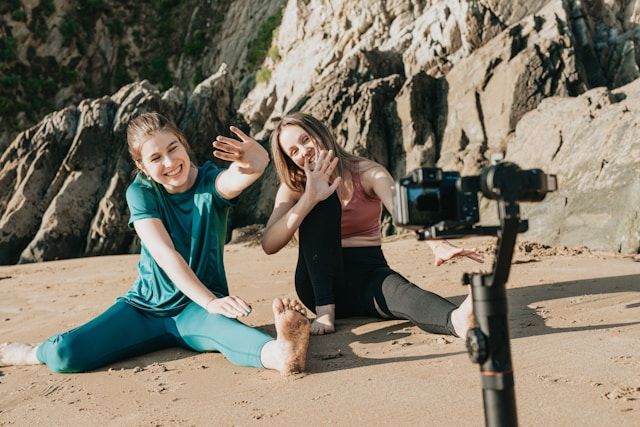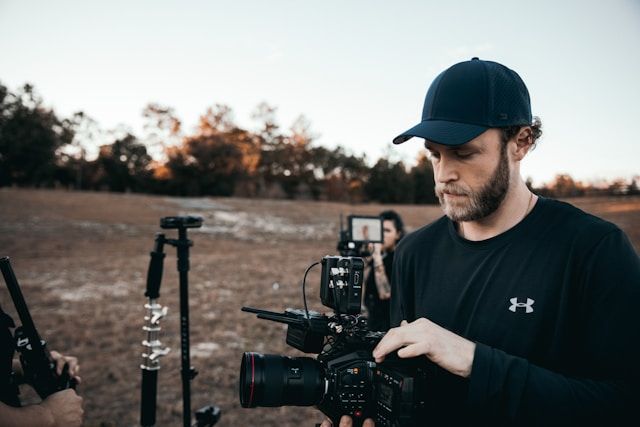The Real Earnings of Content Creators: Insights into the Creator Economy
- The Real Earnings of Content Creators: Insights into the Creator Economy
- Introduction
- The Creator Economy Explained
- The Reality of Content Creation Salaries
- Case Study: Niccoya Thomas
- Case Study: Brian Lindo
- Case Study: Todd Naylor II
- Case Study: Alexandria Masse
- Case Study: Hannah Sterling
- Challenges and Opportunities in Content Creation
- Conclusion
The Real Earnings of Content Creators: Insights into the Creator Economy

Introduction
In today's digital age, the allure of becoming a content creator is undeniable. With platforms like YouTube, TikTok, and Instagram offering not just fame but the promise of lucrative earnings, more and more individuals are diving into this vibrant creator economy. However, the glittering generalities often mask the hard realities of the industry.
This blog aims to shed light on the creator economy, revealing the real earnings of influencers across various platforms, and offering a candid look at the challenges and opportunities within this burgeoning sector.
The Creator Economy Explained

The creator economy, valued at a staggering $250 billion, encompasses individuals who create and monetize content online. This industry has revolutionized the way we consume media, offering personalized, direct-to-consumer content that caters to every imaginable niche.
For digital marketing and e-commerce, this has opened up new avenues for brand partnerships, affiliate marketing, and direct sales, making content creators an indispensable part of modern marketing strategies. Yet, despite its vast potential, the creator economy is a competitive and uneven playing field.
The Reality of Content Creation Salaries
While the top echelon of influencers enjoys substantial earnings, the harsh truth is that not every content creator can make a living wage. In fact, statistics reveal that only 12% of full-time creators earn over $50,000 a year.
This income disparity highlights the challenges many face in turning their passion into a sustainable career. Factors such as platform algorithms, audience engagement, niche saturation, and the quality of content play crucial roles in determining a creator's financial success.
Case Study: Niccoya Thomas
Niccoya Thomas's journey into content creation began on a whim, as a bet with a cousin, but soon blossomed into a full-fledged career focusing on lifestyle videos. With monthly income streams including brand partnerships ($56,000), ad revenue ($1,500), and merch sales ($1,000), Thomas represents the upper tier of earners.
However, her success doesn't come without costs, including management fees ($11,600), equipment, and travel expenses, leading to estimated monthly earnings of $43,520. Thomas's story exemplifies the potential and the investments required to thrive as a content creator.
Case Study: Brian Lindo
Brian Lindo, who started sharing restaurant recommendations on Instagram, has turned his passion for food into a profitable venture. His diverse income sources - ad revenue, user-generated content, brand partnerships, and events - total up to $52,000 monthly.
After deducting expenses for management, food, travel, and more, Lindo nets approximately $37,550 each month. This case study illustrates how carving a niche and diversifying income streams can lead to significant earnings.
Case Study: Todd Naylor II
Todd Naylor II transformed his love for trivia into a full-time job, generating income through brand partnerships, creator funds, and affiliate links. Despite lower earnings compared to Thomas and Lindo, Naylor's net monthly earnings of $6,800 underscore the potential for niche content creators to monetize their passions effectively, albeit with modest expenses for equipment and software.
Case Study: Alexandria Masse
Specializing in textile art and crochet, Alexandria Masse demonstrates the profitability of niche markets. Her income from selling patterns, brand deals, and ad revenue, juxtaposed with expenses on supplies and travel, results in monthly earnings of $3,847. Masse's experience highlights the opportunities within specialized fields of content creation.
Case Study: Hannah Sterling
While incomplete, the data on Hannah Sterling, who manages a social media side gig alongside a full-time job, hints at the financial possibilities for part-time content creators. Sterling's story is a testament to the flexible nature of content creation, allowing individuals to supplement their income through digital platforms.
Challenges and Opportunities in Content Creation

Content creation is not without its challenges, including the need for continuous investment in equipment, software, and personal branding. Moreover, the sustainability of a content creation career depends on the creator's ability to adapt to changing trends and platform algorithms.
However, for those willing to navigate these hurdles, content creation offers unparalleled opportunities for creative expression and financial independence.
Conclusion
The creator economy, with its vast potential and inherent challenges, presents a dynamic landscape for aspiring content creators. While the journey to financial success is fraught with obstacles, the stories of Niccoya Thomas, Brian Lindo, and others serve as inspiring examples of what is possible. As the digital world continues to evolve, so too will the opportunities for content creators to innovate, engage, and prosper